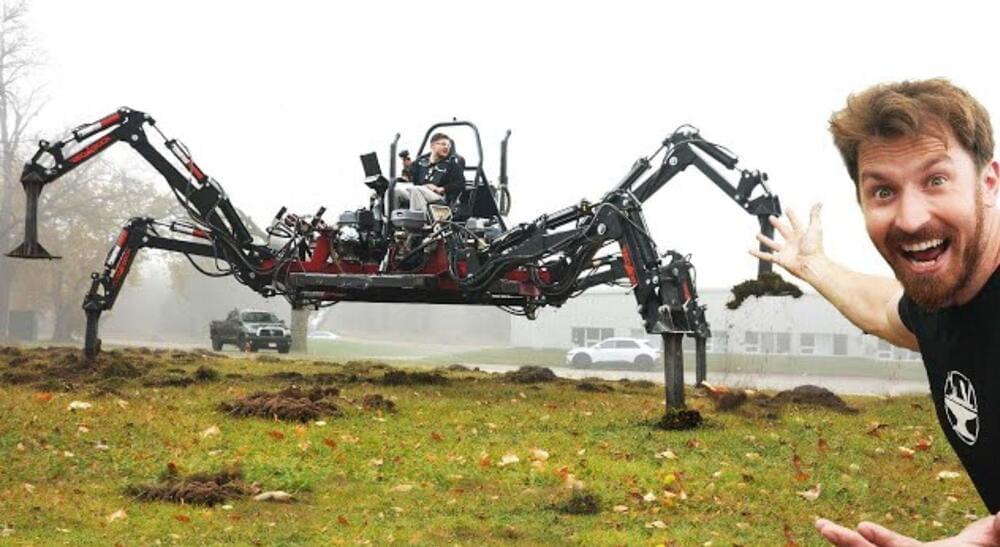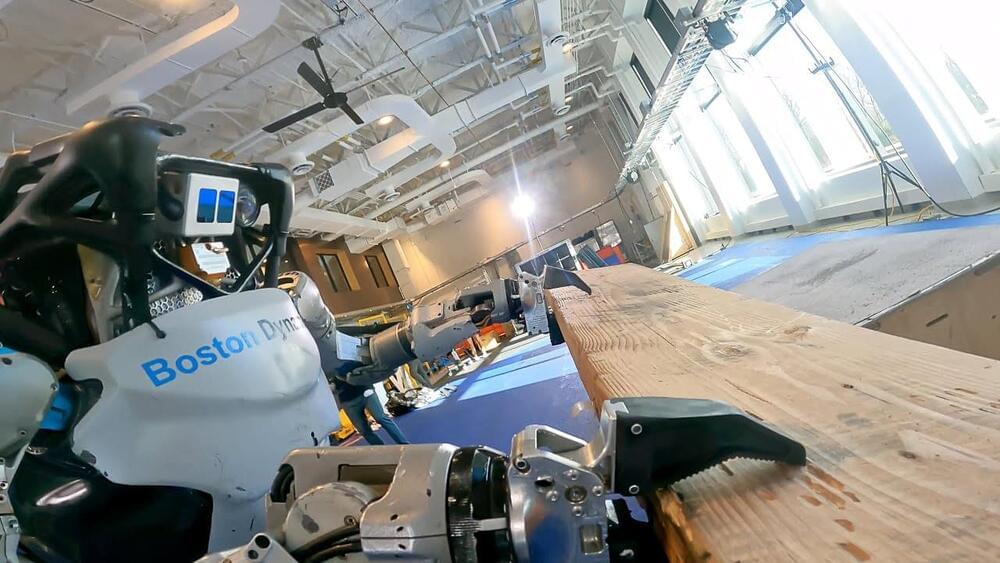Jan 21, 2023
Before and after: See the impact of California storms from space
Posted by Genevieve Klien in category: futurism
Satellite images reveal dramatic changes to California’s valleys, mountains and coastlines.
Satellite images reveal dramatic changes to California’s valleys, mountains and coastlines.

HackSmith Industries/ YouTube.
Initially, the project was supposed to take three months. But it ended up lasting a year and a half and saw many failures, breakdowns, and rewrites. The team behind the YouTube channel even made three videos before scrapping them all and going with the final version.
University of Queensland researchers have identified a pathway in cells that could be used to reprogram the body’s immune system to fight back against both chronic inflammatory and infectious diseases.
Dr. Kaustav Das Gupta and Professor Matt Sweet from UQ’s Institute for Molecular Bioscience discovered that a molecule derived from glucose in immune cells can both stop bacteria growing and dampen inflammatory responses. Dr. Das Gupta said that the finding is a critical step towards future therapeutics that train immune cells.
The research was published in Proceedings of the National Academy of Sciences (PNAS).

See the people building up Atlas.
How does Atlas recognize and interact with objects? How do we develop new Atlas behaviors? Why is manipulation important for the future of robotics?
Continue reading “Inside the Lab: Taking Atlas From Sim to Scaffold” »
A new study has identified a promising drug candidate that can protect neurons from degeneration in mouse models of Parkinson’s disease. The research is published in Science Translational Medicine.
Addressing an unmet need
Parkinson’s disease (PD) is the second most common neurodegenerative disease, and over the last 25 years, the prevalence of PD has doubled, presenting a large health burden across the globe.
The artificial intelligence (AI) chatbot ChatGPT that has taken the world by storm has made its formal debut in the scientific literature, pulling up at least four authorship credits on published papers and preprints.
Editors, researchers, and publishers are currently debating whether such AI tools should be included in published literature and whether the bot should be cited as an author. Publishers are thinking of policies to be created for chatbots like chatgpt.
Research publications and preprint servers stated that AIs like ChatGPT don’t meet the criteria for study authors. They cannot assume responsibility for scientific papers. Some publishers claim that an AI’s contributions to writing papers can be recognized in sections other than those on the author list.
Tractor beams make intuitive sense. Matter and energy interact with each other in countless ways throughout the Universe. Magnetism and gravity are both natural forces that can draw objects together, so there’s sort of a precedent.
But engineering an actual tractor beam is something different.
Luwu Dynamics products are quadruped robot dogs with 12 degrees of freedom. They are used for teenagers to learn Artificial Intelligence Programming. They can realize omni-directional movement, six-dimensional attitude control, attitude stability and a variety of motion gait. They are internally equipped with 9-axis IMU, joint position sensor and current sensor to feed back their own attitude, joint angle and torque for internal algorithm and secondary development, It can off-line AI functions such as face recognition, image classification, gesture recognition, speech recognition, audio analysis and target tracking, and supports cross platform graphical and python programming.

An interesting interview conducted at a conference workshop with 3 experts discussing what is AI and how it is impacting the world of scientific publishing.
A recap of a recent SSP webinar on artificial intelligence (AI) and scholarly publishing. How can this set of technologies help or harm scholarly publishing, and what are some current trends? What are the risks of AI, and what should we look out for?
An artificial intelligence dubbed Claude, developed by AI research firm Anthropic, got a “marginal pass” on a recent blindly graded law and economics exam at George Mason University, according to a recent blog post by economics professor Alex Tabarrok.
It’s yet another warning shot that AI is experiencing a moment of explosive growth in capability — and it’s not just OpenAI’s ChatGPT that we have to worry about.
Anthropic — which according to Insider secured funding from disgraced crypto exec Sam Bankman-Fried and his alleged romantic partner, former Alameda Research CEO Caroline Ellison — made a big splash with its new AI earlier this week.
